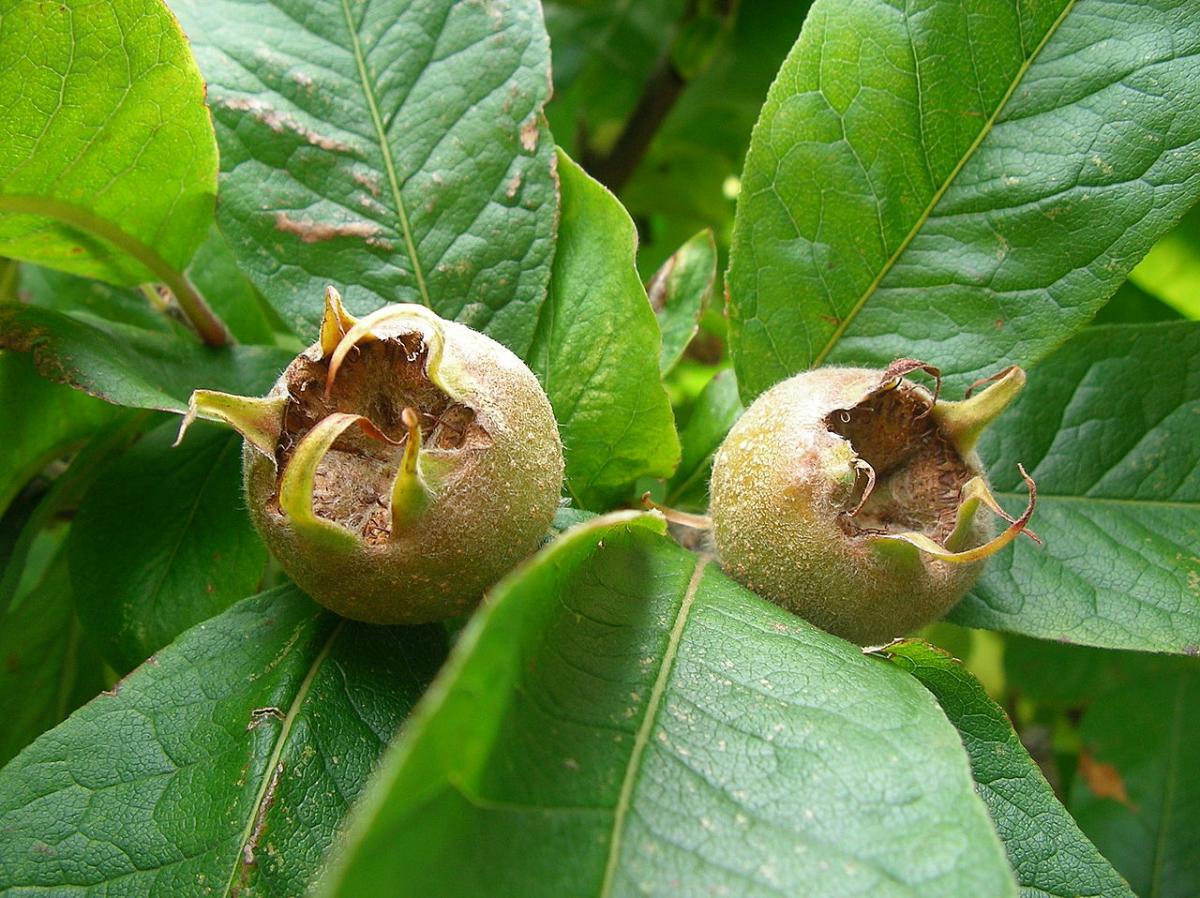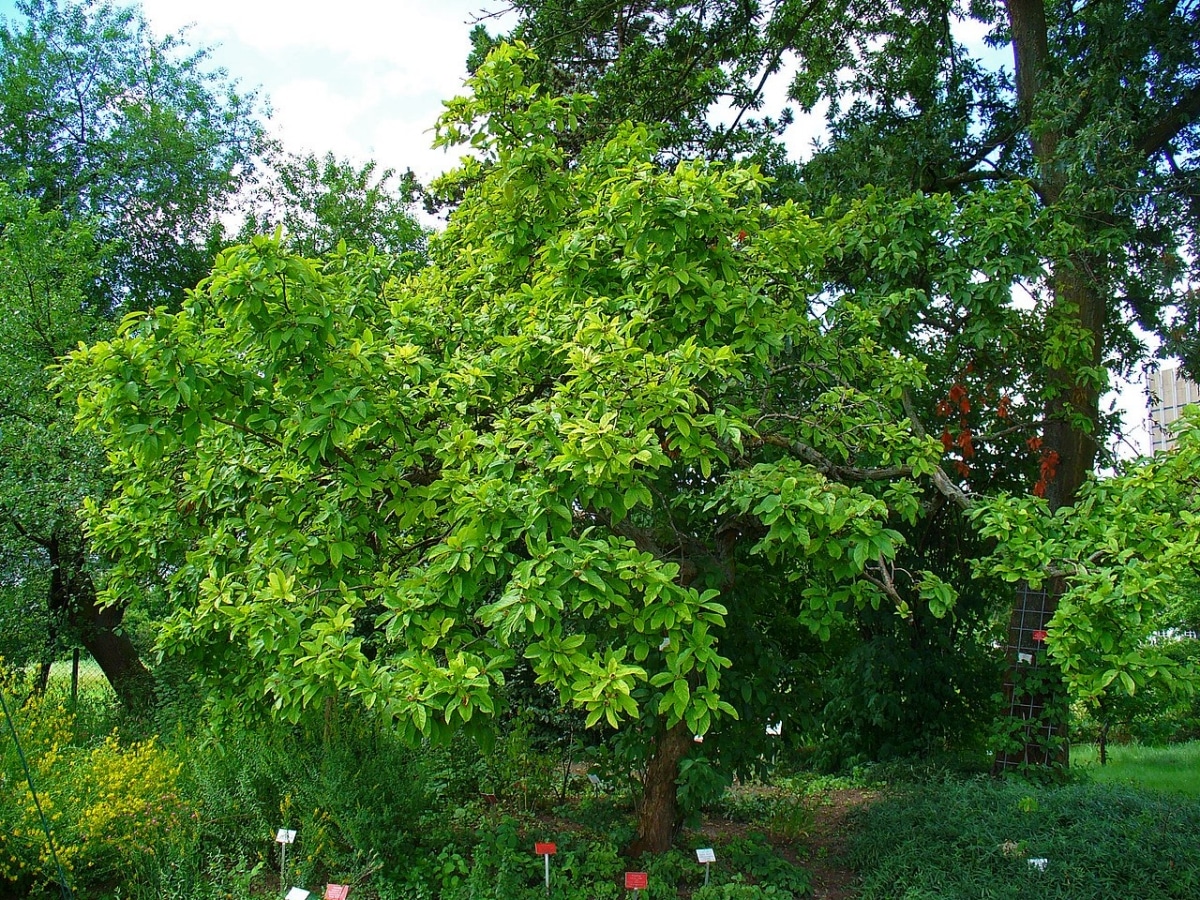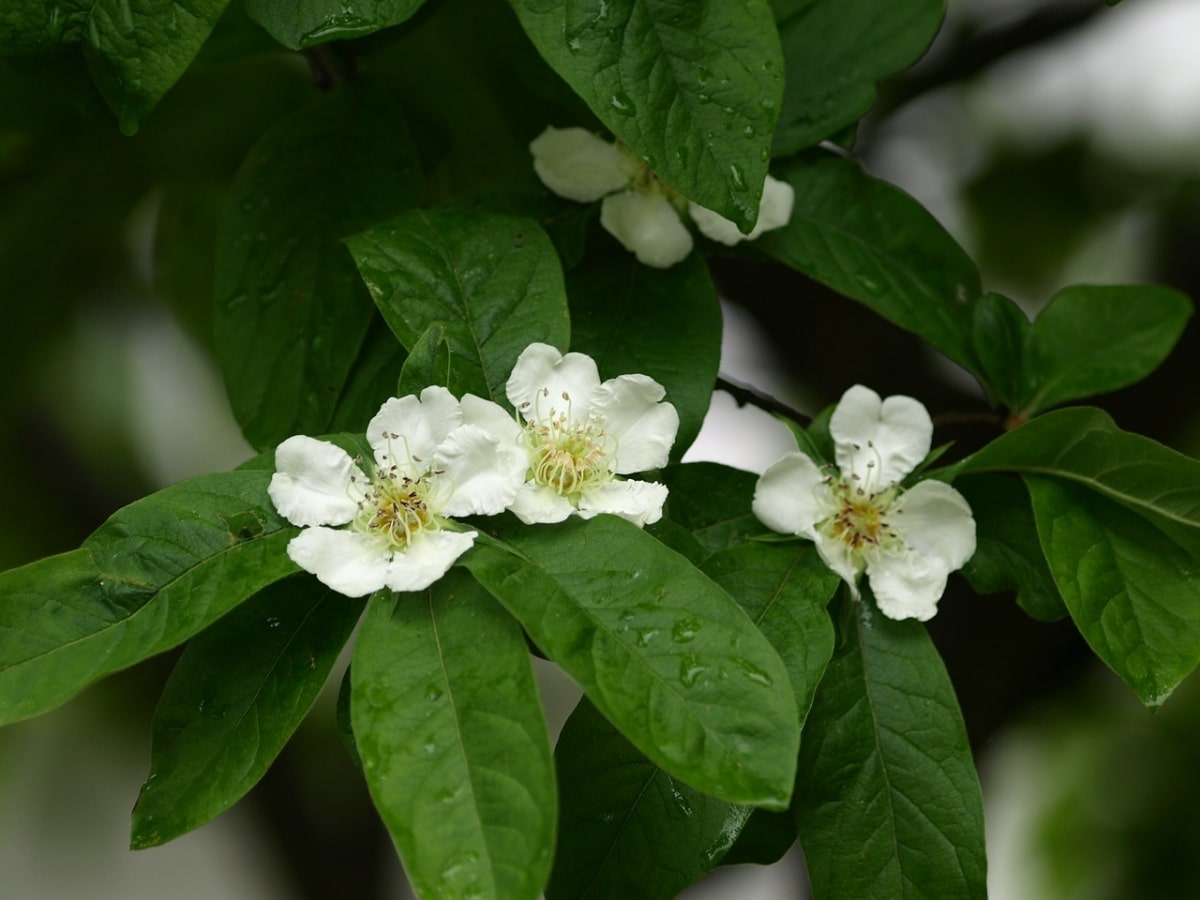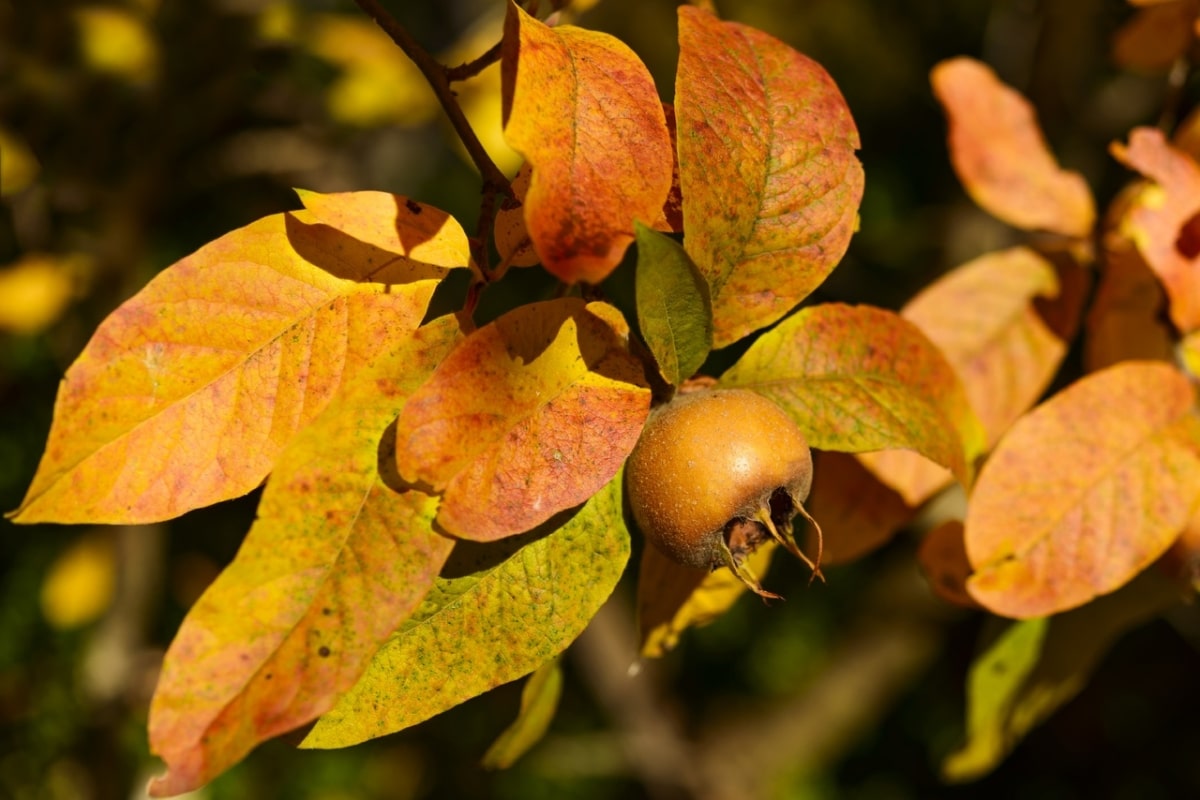
Image – Wikimedia/Rwimmer
El mespilus germanica or European medlar is a deciduous fruit tree which is not usually cultivated as much as the eryobotria japonica; however, it is a plant that is also prepared to withstand the climate and soil that we have in Europe, with the advantage that it grows much less than E. japonica.
But since it is not cultivated much, it is an almost unknown fruit tree. How do you have to take care of it? How often should it be watered? Well, these doubts and others we will solve now.
What are the characteristics of the European loquat?

Image – Wikimedia/ H. Zell
The first thing we have to clarify is that, despite his surname, Germanic, is not originally from Germania (present-day Germany), but from Western Asia. It is believed that he arrived in Europe at the hands of the Romans around 700 BC. c. It is a large tree or bush, reaching a height of 5-6 meters. It develops an irregular crown, with a wide base, and with branches that tend to twist, giving it a rebellious but beautiful appearance.
Its leaves are green and elongated, reaching 12-14 centimeters long by 5 centimeters wide, and they can have smooth or slightly jagged margins. The flowers are white, about 5 centimeters in diameter, and the fruit is a globular knob which measures about 2,5 centimeters and is golden yellow when it finishes maturing.
What is?
The European medlar is used for the same as the japanese medlar; namely: it can be a nice garden or orchard tree, being able to even have it in a pot; but its fruits are also edible, although they have to undergo a softening process so that they can be eaten without problems, for example, leaving them on the tree to soften naturally.
when it's ready, the skin turns brown and wrinkled and the flesh may appear spoiled, but nothing is further from reality: when that happens, it can already be served.
However, if you don't like it, you can use it to prepare jams or include it in a dessert recipe.
What are the care of the mespilus germanica?
Our protagonist is a fruit tree that requires very simple care. It resists the sun, frost, and grows in almost any type of soil. The only thing to keep in mind is that it cannot grow in very alkaline soil, as the lack of iron would cause its leaves to turn yellow.
Where to put it?

El mespilus germanica it needs a lot of light to grow, so we will put it outside. Whether we want to plant it in the garden or if we are going to grow it in a pot, it will be possible for us to do so since it is very adaptable. In addition, it easily resists moderate frosts of up to -18ºC.
The only thing we have to keep in mind is that the earth has to be acidic or neutral. This means that if it is going to be in a container, we will put a substrate whose pH is 7 or less, such as this one from BioBizz, and if it is going to be in the garden or orchard, we will first find out what the pH of the soil is, since it will only be viable to have it there if it is low or neutral.
How to water the European medlar?
It must be irrigated with rainwater, if possible, or with one that is suitable for consumption. It is important that it does not have a lot of lime, since it would cause damage as a result of clogging the pores. In addition, you have to water about two to four times a week in summer, and the rest do less so that the soil can dry.
And if it is going to be in a pot, choose one with drainage holes. If planted in one without holes, the tree will not survive long.
When to pay it?
El mespilus germanica must be fertilized while it is growing, from early spring to early fall. It will be fertilized with organic products, such as mulch, mature and dry chicken manure, or guano, following the instructions for use. This way, you will get it right.
Likewise, it does not hurt to pay it with a special fertilizer for acid plants from time to time like the one that you can buy hereFor example, once every two or three months to make sure it has all the nutrients it needs. But yes, it should not be mixed with any other manure or fertilizer, since it would cause an overdose and it would suffer a lot.
When and how to prune mespilus germanica?
If you intend to keep it in a pot, and/or if you would like it to have a tidier cup, you can prune it in late winter. Remove the branches that are dead, that is, those that are dry and brittle, and take the opportunity to reduce the length of those that are growing so much that they give the plant a rebellious appearance.
Use pruning tools that you have previously cleaned in order to prevent infections.
European medlar pests

Although it is a resistant plant, it could be affected by the following pests:
- Mealybugs: they are tiny insects that can look like cotton balls that break easily, or limpets (like scales that can be removed with a fingernail). They hide on the underside of the leaves, near the nerves, and sometimes also in the tender stems. It is possible to combat and eliminate them with an ecological anti-cochineal insecticide, such as this.
- Aphids: these are insects, also very small, about 0,5 centimeters, that feed on the sap of leaves and flowers. The most effective way to eliminate them is with an organic anti-aphid insecticide (you can buy it here), but can be controlled with yellow sticky traps hung from branches. buy them here.
- Fruitfly: it is an insect that bites the fruits, and in doing so the female leaves her eggs. Therefore, these are no longer fit for human consumption. To control them you can use yellow sticky traps, or fight them with insecticides containing malathion.
What did you think of the mespilus germanica?